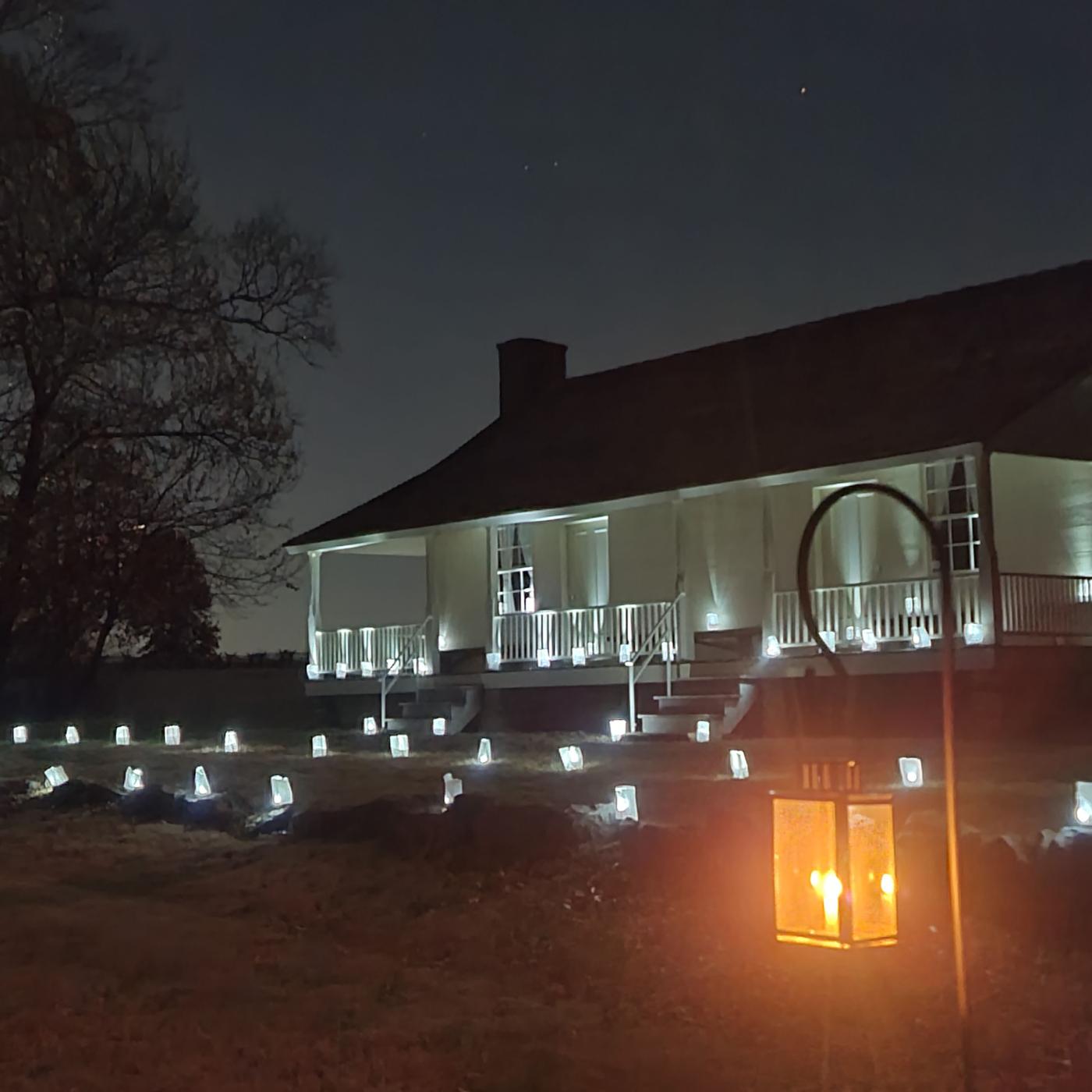Season 1
Episode 1
2024 Memorial Luminary - Episode 1 - Visitor Center to Ray House
Transcript
Welcome to Wilson’s Creek National Battlefield and thank you for attending our annual Memorial Luminary this evening.
This driving tour will stop at three locations on the battlefield where casualties were concentrated. We encourage you to listen for a mention of the individual included with your program at these stops. Each light represents a soldier killed, missing, or wounded during the battle.
For your safety, we ask that you watch your footing while outside your vehicle due to uneven surfaces and low lighting. Please stay together as a group during presentations. In the interest of providing an authentic experience for all participants, no flash photography will be permitted during the tour. Keep headlights on while driving. Upon arrival at each stop, please turn off your vehicle engine and headlights.
Now let’s set the stage for your first stop.
Thousands of Federal forces assembled in Springfield during the humid afternoon of August 9, 1861. After three months on the march and many small victories, they would soon be face-to-face with a force that outnumbered them two-to-one.
Federal commander General Nathaniel Lyon rallied his troops by giving a brief speech to each company. He had meant to be inspiring, but his men couldn’t help but notice the “deep traces of anxiety” in his voice.
“Men we are going to have to fight. We will march out in short time. Don’t shoot until you get orders. Fire low—don’t aim higher than their knees; wait until they get close; don’t get scared. It’s no part of a soldier’s duty to get scared,” General Lyon said in one speech.
They left that evening, wrapping wagon wheels and horse hooves in blankets to muffle the noise. Soldiers weaved in and out of line, telling stories and exchanging letters to be sent home. They were allowed to rest briefly before sunrise, before continuing the march.
By 5:00 am, General Lyon and around 5500 men had drawn close to the point where the Wire Road between Jefferson Barracks in St Louis and Fort Smith in Arkansas crossed Wilson’s Creek. Lyon issued orders to Captain Joseph B. Plummer to march towards the Ray House and secure the road and its telegraph line on the north side of the creek.
Captain Plummer and his 300 men soon engaged the 1000 men in the combined forces of the 2nd Arkansas Mounted Rifles and the 3rd Louisiana Infantry Regiment in the Ray Cornfield. The fighting there was intense. The close quarters combat and artillery fire from both sides resulted in heavy losses. Captain Plummer was wounded and more than 100 of his detachment fell in combat.
Civilians were also affected by the battle. The Ray family – consisting of John and Roxanne Ray, and nine of their eleven children, along with Rhoda, a woman enslaved by the Ray family and Rhoda’s four children – were home as the battle began in their cornfield.
According to family tradition, everyone but John Ray took shelter in the cellar, while John watched the fight from the porch. Confederate troops took control of the house by late morning and converted it and the family’s fields into a field hospital. Wounded US and Confederate soldiers were treated at this location. Due to the severity of their wounds, some soldiers were at the Ray House for weeks before they could safely make the trip into Springfield.
The Battle of Wilson’s Creek had begun and the fate of Missouri hung in the balance.
Welcome to the 2024 Memorial Luminary! In this episode, find safety information and an introduction to the opening moments of the battle as Federal troops under General Nathaniel Lyon attacked Confederate camps near the Ray House. Also, learn more about how the Ray family responded to the battle.

